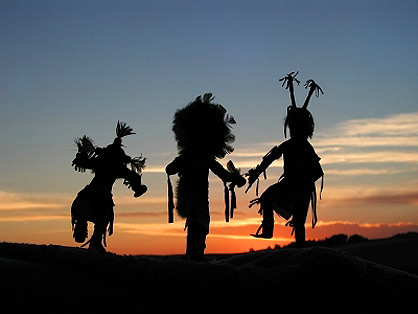- Werner Herzog

Does an image have the capacity to change the way you think? Has there been a picture that allows you to understand the human condition deeper than you have before? The questions are mild ones, but perhaps in some way prudent. Numerous photographs from the pages of National Geographic and Life magazine are considered classics of modern art. The Afghan girl. The burning monk. The starving child and vulture. We feel an attraction to such images for various reasons; their beauty, the contrasts and it's message. For me, it is the story. An overused cliche, "A picture is worth a thousand words" is in some way what I am drawn to with photographs.
When I was old enough to understand what was happening in China, 20 years ago on this day, for some reason the picture made all the difference. It brought the tragedy to a level that I couldn't help but understand. We've all seen the picture, on coffee mugs, posters on peoples walls, and computer desktops. I'm not going to describe what it shows. The only thing that I'll relay is what the picture helped me understand.
Besides the simple 'Every individual can make a difference' claptrap, the picture was somewhat instrumental for me to understand the internal politics of power. I don't buy that this man's act changed anything on that day, the tanks eventually went on their way, paving over students who just wanted a bigger slice of democracy. Power is a force that bleeds from the top down. If it is anything in the photograph that I think about, I'm thinking about the men in the tanks. They were well aware of what they had to do on that day, and knew that it would probably involve death. One their way to achieving their goals, one man was able to make these men hesitate. For just a few moments, I think that the tank drivers became aware of what was at stake. Perhaps they realized what kind of cog they were in the machinations of power. It is that simple hesitation which haunts me.
What pictures, if any, seem to strum a chord with you?

5 comments:
Years ago I came across an image of a soldier skillfully aiming his rifle at a woman and her child. It's in black and white, just one of the many repulsive images to come out of the holocaust. I kept it on my wall, not to depress myself, but to never forget the injustice and suffering of others. It epitomizes for me the absurdity and stupidity of violence. Enjoy!
http://www.geocities.com/deke1942/tccop/Nazi_Woman.jpg
Check out this previously unpublished image of the Tiananmen Tank Man from a different vantage. His little figure is already standing razor straight, waiting for the tanks to come and restore peace and calm, which is what tanks were designed to do, it is their essence.
http://lens.blogs.nytimes.com/2009/06/04/behind-the-scenes-a-new-angle-on-history/
Brilliant.
Pictures are bizarre and whimsical creatures. Agreed. But we use these things, integrate them into our lives, without really understanding their power (read Facebook). They can mechanize our lives, mediating the immediate, or enliven them, shining new angles down on dead subject matter.
I think it's how we use them that gives real meaning.
Here's a clip from a film called 'War Photographer', about photojournalist James Nachtway. Insightful film if you see it.
http://www.youtube.com/watch?v=x3VoyjUP8hg
I hate that this is such a cliche - not only that I'm exhibiting my ability to adhere to cliches but that this photograph apparently became one. I saw this one as a child when I first started learning about the history of violence but for some reason I was under the impression that the little boy escaped and so the message of the picture for me was more along the lines of looking back on suffering rather than living in it.
Now I just see the horror on the face.
http://www.history.org.uk/library/0807/0000/0014/jewish_boy_surrenering_in_1943_450.jpg
Post a Comment